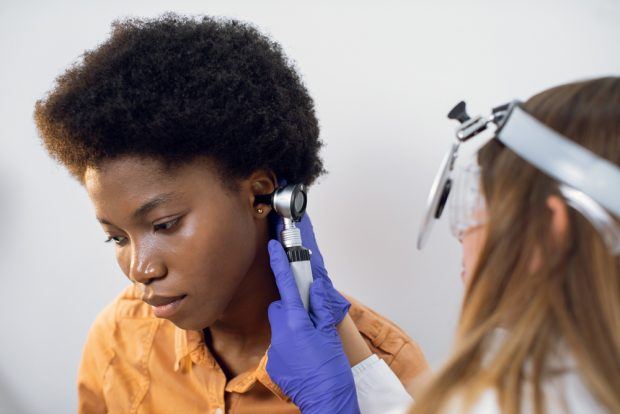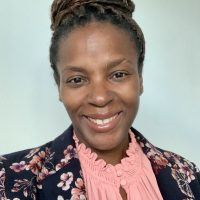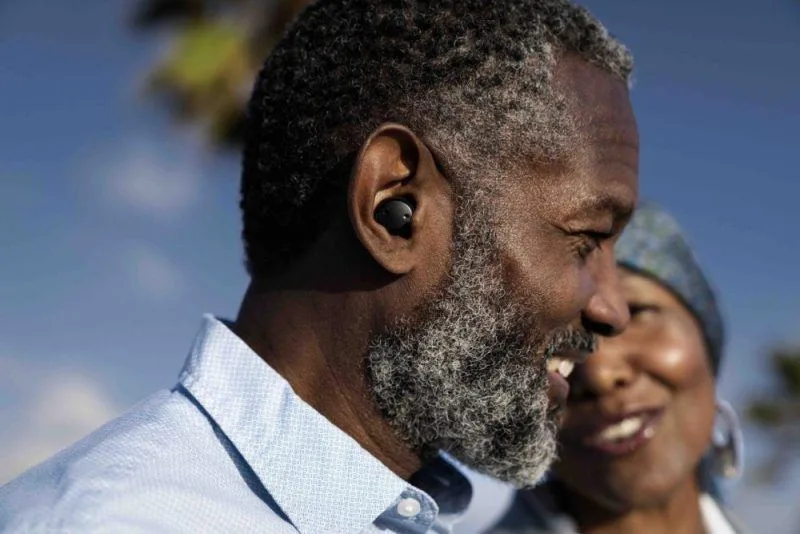As we celebrate another World Hearing Day on March 3, there are signs that years of effort by the World Health Organization (WHO) and others to draw attention to the importance of hearing care may be starting to pay off. And the timing couldn’t be better, because certain risks to good hearing remain all around us. By Dr. Sheneekra Adams, AuD
This year, the WHO is emphasizing the importance of coordinating hearing care with primary care to make it easier for those with hearing loss to get the help they need. Easier care should lead to more care.
It Should Be Easier To Access Care For Hearing Loss
Today, there are over 48 million Americans with hearing loss, but some cases are worse than others. In fact, hearing loss, according to the American Speech-Language-Hearing Association, can be defined as mild (26 to 40 decibels), moderate (41 to 70 decibels), severe (71 to 90 decibels), or profound (91 or more decibels). Prescription hearing aids, which are an effective treatment for every level of hearing loss, are professionally fitted by hearing care professionals who test hearing through advanced diagnostic tools.
Hearing aids will be available over the counter in the US
But until recently, hearing aid adoption remained low, particularly for those in the mild and moderate categories. In the United States, starting this year, hearing aids will be available over the counter (OTC) — a huge step forward that could help millions of people, who otherwise wouldn’t take greater long-term ownership of their hearing care. While OTC devices are only viable for those with mild or moderate hearing loss, more ubiquitous hearing aids should lead to greater usage.
That’s significant, because as the WHO is acutely aware, not enough people take care of their hearing or seek hearing aids when they need them. In the U.S. alone, as many as 27 million people live with unaddressed mild to moderate hearing loss. Worldwide, the WHO estimates that by 2050, nearly one in four people will experience hearing loss, and about 700 million will need access to hearing care.
Hearing loss affects the quality of life
Mild to moderate hearing loss may seem tolerable to those who experience it (knowingly or not), but its effects can be wide-ranging. Over time, hearing loss can lead people to withdraw from social situations when understanding others. Communicating with them becomes too difficult, or managing it by relying on friends and family to repeat what’s been said or by avoiding noisy situations. And while hearing loss manifests this way, it’s been shown to affect mental and physical health.
If there’s a silver lining, it’s that eventually, about 20 percent of those who require them seek hearing aids. Unfortunately, it takes an average of seven years to do so — years when a more readily available, OTC solution could provide the bridge to long-term, professional hearing care.
In those intervening years, we know hearing risks mount, not subside, especially in our digital age of gadgets and wearables. One of the greatest risks is noise-induced hearing loss (NIHL).
More Noise Should Lead to Greater Care
The Centers for Disease Control and Prevention recently found that a quarter of adults who said they have good hearing were experiencing measurable hearing loss. And, perhaps not surprisingly, the presence of noise-induced hearing loss — really, the only type of hearing loss that’s preventable — grows as people age.
The fact is, “noise” has become a part of everyday life. Not just the noise of traffic, lawnmowers, or construction work, but the noise we intentionally introduce through earphones or the increasingly prevalent headsets used for remote work.

SofikoS/Shutterstock
As personal music, podcasts, Zoom calls, and listening to TikTok videos become a regular part of life, noise begets noise. To drown out the lawnmowers, people turn up the volume in their earbuds. Suddenly, they’re above the 70 decibels, where the CDC warns prolonged exposure can lead to noise-induced hearing loss.
Yes, it’s within the public’s control to minimize noise exposure. Maybe wear noise-cancelling earbuds to minimize the urge to overcome ambient sound. Additionally, many companies have volume-limiting headphones. For example, Apple has made it so iPhone users can monitor headphone audio levels and receive alerts when they’ve been dangerously high.
All this is to say that the risks of noise-induced hearing loss are known and engrained in our modern lifestyles. Therefore, hearing care should be equally integrated into everyday life and available to anyone who needs it.
Creating a Richer Hearing Health Journey
The WHO believes that 60 percent of hearing issues can be identified through primary care. In some cases, when hearing loss is suspected, patients can see an HCP in the same or a nearby office, accelerating patients’ exposure to professional hearing care. Similarly, OTC hearing aids have the potential to boost the number of people who seek to address their mild to moderate hearing loss earlier in life.
Having made hearing care part of their lives, they’re in a far better position to tackle the unique challenges of their own individual hearing health journey. This can be done through engagement with trained hearing care professionals and the adoption of more advanced hearing aids.
It’s no small task, especially when every day it seems easier to damage your hearing than to care for it. But events like World Hearing Day help normalize hearing care, first by raising awareness, then by encouraging its integration with overall personal care.
World Hearing Day is an especially good time for people to evaluate their hearing health. They should also consider how addressing hearing loss can have a huge positive impact on their quality of life. This includes helping keep people doing what they love and being able to stay connected with loved ones. Today, there are many high-tech and user-friendly options to address hearing health that can help those with hearing loss get the solutions they need.
It’s a noisy world out there. The right of hearing care helps ensure it’s a wonderful world, too.
References
World Health Organization (1/2): https://www.who.int/campaigns/world-hearing-day/2023
American Speech-Language-Hearing Association: https://www.asha.org/public/hearing/degree-of-hearing-loss/
World Health Organization (2/2): https://www.who.int/news/item/02-03-2021-who-1-in-4-people-projected-to-have-hearing-problems-by-2050
Who is the author?

Sheneekra Adams, AuD
Sheneekra Adams, AuD, is the Sr. Director of Professional Development at HearUSA. As a senior clinical leader within HearUSA, she provides leadership and consultation on the design and implementation of key initiatives.
Dr. Adams began her career as a dispensing Audiologist and her focus over the last two decades has been to help people hear better. In her current role, Dr. Adams leads HearUSA’s Learning & Development team to ensure best practices are followed consistently across HearUSA hearing centers.





![women [longevity live]](https://longevitylive.com/wp-content/uploads/2020/01/photo-of-women-walking-down-the-street-1116984-100x100.jpg)









